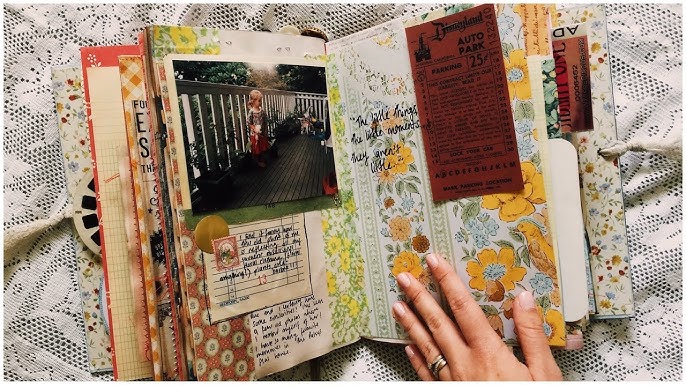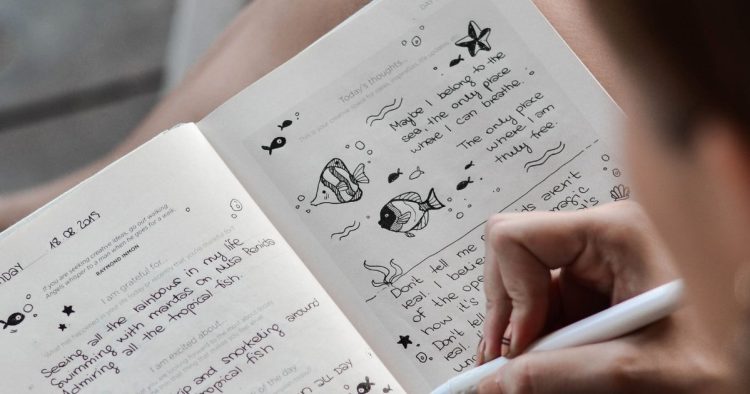Prologue: The Quiet Revolution in a Notebook
In cafés, dorm rooms, and on train rides, a quiet revolution unfolds: young people bending over notebooks, cutting paper scraps, arranging stickers, sketching letters. What looks like an ordinary hobby is, for many, a life project of identity-building.
This essay explores the intersection of youth culture, personal identity, and collective belonging in the contemporary journaling trend—especially the vibrant hand-account communities. By weaving personal stories, cultural theories, and global comparisons, it argues that journaling today is not just about “writing things down” but about finding one’s place in a fragmented world.
Part I: Portraits of the Young Journalers
Rather than beginning with abstract theory, we meet three young journalers whose stories illustrate the diversity and depth of the phenomenon.
1.1 Mei, 19, Shanghai: The Seeker of Order
Mei started her first bullet journal during high school exam season. What began as a planner to track assignments grew into a creative refuge: she decorated weekly spreads with washi tapes and watercolor motifs. Now a university freshman, she says,
“Every page I make feels like a conversation with myself. It’s a small space where I get to decide what life looks like.”
1.2 Luca, 23, Milan: The Hybrid Creator
Luca combines digital and paper media. His Instagram account—@lucajournals—showcases collages that mix printed photos, scanned calligraphy, and hand-painted textures. To him, the journal is “a personal exhibition that never really ends.”
1.3 Aisha, 21, Nairobi: The Community Builder
Aisha founded a campus journaling club to support peers dealing with stress. She believes “writing and decorating together helps people share feelings they cannot say out loud.”
These portraits hint at the multiple meanings journaling carries: as a tool of organization, an artistic pursuit, and a social bridge.
Part II: Journaling as a Space for Identity Work
Young people use journals to explore and express who they are. This section draws on theories of youth culture and identity.
2.1 Narrative Identity in the Age of Disruption
According to psychologist Dan McAdams, people construct “narrative identities” by weaving their experiences into stories. Journaling—especially hand-accounting—provides a tangible stage for self-storytelling, helping youth anchor their sense of self amid fast social changes.
2.2 Visual Aesthetics as Identity Language
Colors, fonts, and motifs become more than decoration; they signal personality and group affiliation.
- Minimalist black-and-white spreads often express a desire for control and clarity.
- Pastel kawaii themes can reflect playfulness and nostalgia.
- Eclectic collages reveal openness to diversity and cultural remix.
In this sense, a journal is not merely a private diary but a semiotic playground of identity signals.
2.3 Hybridity and Cultural Belonging
Globalized aesthetics allow youth to mix Korean stationery, Latin American prints, and Arabic calligraphy. This hybrid visual language demonstrates how young people fashion identities that cross national and cultural boundaries.
Part III: Community and the Search for Belonging
Beyond individual identity, journaling provides young people with a sense of belonging.
3.1 Online–Offline Constellations
From Instagram hashtags to local meetups, journaling communities operate as “networked publics”—spaces where belonging is negotiated across digital and physical boundaries.
3.2 Peer Support and Mental Well-being
Studies show that creative journaling correlates with reduced stress and improved mood. When practiced in communities, it also fosters empathy and mutual support. Aisha’s club is one example of how such communities create safe spaces for self-expression.
3.3 Collective Aesthetics and Trend Cycles
Community trends—like the resurgence of vintage scrapbooking or the popularity of pastel planners—shape individual choices, illustrating the dialectic between individuality and collectivity in youth culture.

Part IV: The Cultural Logics Behind the Trend
Several cultural logics explain why journaling resonates so strongly with today’s youth.
4.1 Resistance to Digital Ephemerality
In a world of disappearing messages and endless scrolling, the permanence of paper offers a counter-experience. Young people appreciate the slow, tactile process as a way to reclaim attention and meaning.
4.2 Rituals of Care in Uncertain Times
Cutting, pasting, and decorating are small rituals that provide comfort in unstable social and economic contexts. Journaling becomes a practice of self-care and grounding.
4.3 From Private Reflection to Performative Sharing
Where older generations saw diaries as secret, many Gen Z journalers see them as shareable creative projects. This shift reflects broader cultural moves toward performative selfhood.
Part V: Tensions and Contradictions
Despite its positive aspects, the journaling trend also embodies tensions.
5.1 Authenticity vs. Aesthetic Pressure
Some journalers feel compelled to produce “Instagram-worthy” spreads, which can lead to anxiety and reduce authentic self-expression.
5.2 Inclusion vs. Commercialization
The booming market for premium stationery risks creating barriers for low-income youth. A hobby meant to empower creativity can become exclusionary.
5.3 Solitude vs. Connectivity
While journaling nurtures personal introspection, constant sharing online sometimes overshadows the intimate, reflective side of the practice.
Recognizing these contradictions is essential for a balanced understanding of the culture.
Part VI: Comparative Perspectives
The journaling trend manifests differently across contexts.
- East Asia: Emphasis on high-quality stationery and aesthetics; strong online tutorial communities.
- Europe & North America: Focus on bullet journaling for productivity, later expanded into artistic forms.
- Africa & South Asia: Growing communities using journaling as a low-cost tool for education and self-help.
- Latin America: Rich traditions of scrapbooking and storytelling merge with digital sharing platforms.
These differences show how journaling is localized yet globally connected, shaped by material access, cultural traditions, and platform economies.
Part VII: Future Directions of Youth Journaling
The future of youth journaling will likely be shaped by technological, cultural, and socio-political factors.
7.1 Hybrid Media Expansion
Digital tablets with tactile screens, AR-enhanced planners, and AI-based layout suggestions will further blur the line between analog and digital practices.
7.2 Education and Therapy Integration
Schools and counseling centers increasingly recognize journaling as a tool for reflection, learning, and mental health support.
7.3 Cross-Cultural Creative Collaborations
Global online communities may produce collaborative zines, hybrid exhibitions, and digital archives of journaling practices.
7.4 Advocacy and Activism
Youth are beginning to use journals as platforms for climate activism, gender equality campaigns, and cultural preservation projects.
Epilogue: The Page as a Small World
In every hand-account spread, we see a microcosm of youth culture—its hopes, struggles, creativity, and search for meaning. The notebook becomes a stage where private stories meet collective narratives.
For Mei, Luca, and Aisha, journaling is not simply decoration; it is a way to make sense of their lives. For their communities, it is a shared language that transcends geography and background.
As long as young people continue to seek ways to narrate themselves and to belong to something larger than themselves, the humble notebook—physical or hybrid—will remain a vital cultural artifact.
















































